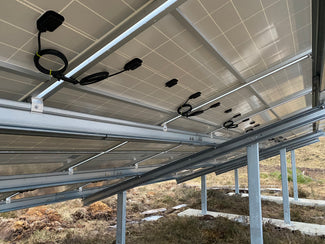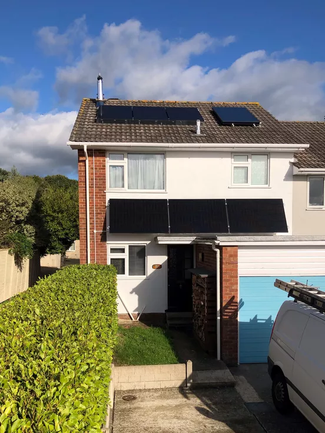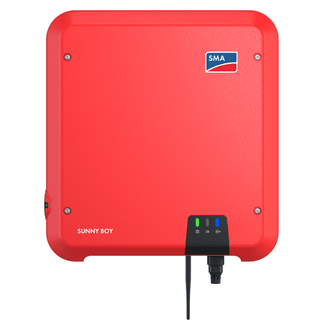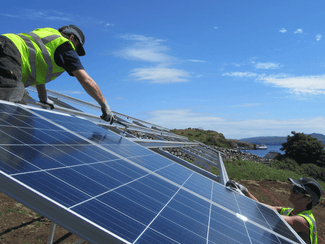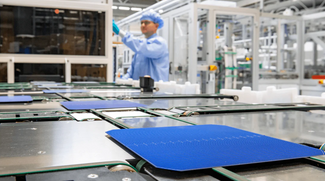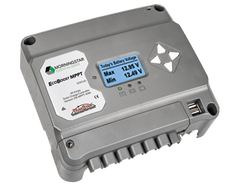
Solar photovoltaic charge controllers are used in off-grid PV solar systems to control the amount of energy from the solar PV panels going into the batteries.
By monitoring battery voltage they regulate the charging current from the PV array enabling batteries to be fully charged but not overcharged to protect the batteries from subsequent gassing, loss of electrolyte and possible plate damage.
- Control energy flow to the batteries
- Prevent batteries from overcharge
- Regulates voltage and current
- Tapers charge current into battery as it gets full
- MPPT controllers allow maximum power to be harvested
Charge controllers allow solar energy to be fully utilised for battery charging, increasing efficiency, increasing charge acceptance of the battery and increasing battery life.
Optional Features
Charge controllers may offer additional or optional features to enhance the system’s performance.
- Low voltage warning or disconnect function to switch off loads if the batteries become very low, preventing excessive discharge.
- Displays (built in or remote) to indicate charging currents, load currents and battery voltage. One of the purposes of a charge controller is to inform the user whether the system is working properly and to allow monitoring of the system. This is done through a visual indication of battery condition, charging currents, load currents and fault conditions. This can be done using:
- Simple status LEDs (light emitting diodes) showing for example whether a current is flowing from the solar array to the battery or indicating whether a battery is in a low, medium or full condition.
- Meters can be included to display voltage (and hence battery state of charge) and amperage of solar modules or loads. Often a single display is used with selection or scrolling through different parameters.
- Remote connection eg. by Bluetooth for wireless communication with smartphones or tablets.
- Lighting control and timers To allow loads to be switched on automatically and then off again after a certain amount of time. This is often used for lighting systems where lights may be switched on at dusk stay on for a few hours and then be switched off. Some controllers are also able to switch lights on again for a period of time before dawn.
- Temperature Compensation to ensure accurate charging


Choosing a charge controller
- The main consideration is the peak charging current you need to control. It is worthwhile selecting one that will handle extra power if needs change in the future.
- Controllers should not be used with more modules than they are rated for.
- A PV array can be split into sub-arrays, each with its own charge controller, in order to accommodate increasing numbers of modules.
- For the smallest panels, or where a relatively large battery store is used, controllers may not be necessary.
- All controllers listed include protection to prevent any current drain from battery to PV panel at night, so no additional blocking diodes are required.
Pulse Width Modulation (PWM) Charge Controllers

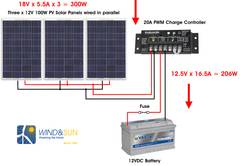
These work by gradually reducing (or tapering) the flow of energy into the battery as a full charge is reached so achieving a more complete charge. Very fast solid state switching technology is used for this, known as pulse width modulated (PWM) control.
- Solar panel voltage must match battery voltage (36 cells)
- Panel operates at battery voltage
- Tapers charge into battery as it gets charged
- Current into battery is limited to maximum power point current of panel
- Low Cost
- Simple and reliable
- Suitable for smaller systems (<200Wp)
- Can include load control features
- Optional displays (built in or remote)
This allows batteries being charged to reach a regulation set-point and then be maintained at that voltage by automatically tapering the charging current based on the battery’s state of charge in order to always keep the battery charged.




Maximum Power Point Tracking (MPPT) Charge Controllers
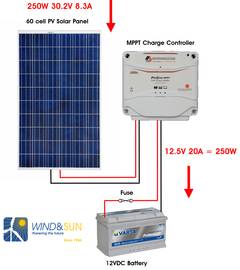

These are needed for use with larger 60 cell PV panels in order to match the PV output voltage with battery voltage.
- They allow PV panels to operate at their maximum power point voltage
- Controller drops this down to battery voltage.
- Current boosted by doing this
- Panels deliver full power to battery
Advantages
- Panel voltage doesn’t need to match battery voltage
- Can use high voltage string configurations
- Smaller cable can be used
- PV can be sited further from battery
- Better for larger systems (>200Wp)
- 60 cell panels are better value than 36 cell 12V panels so the extra power delivered can justify extra cost of the controller even for 12V systems
They allow a PV array to deliver up to 30% more power to a battery than it would if it were connected directly to the battery. The current from PV modules varies with sunlight levels but is fairly constant over a wide range of voltages. This means they can operate at higher voltages than the voltage of the battery bank which they are charging.




Four Stage Charging
Charge controllers ensure batteries are charged completely by doing this in four stages:
- Bulk Charge. The controller delivers all available solar power to the battery to recharge ~ 80% as fast as possible
- Absorption. After the battery has reached the Bulk voltage set point, this is maintained and current reduced to give last ~20% of charge.
- Float. Lowers the charge voltage to reduce heating and gassing and protects battery from long term overcharge
- Equalise (Vented batteries only). This is a periodic boost charge that can be automatic or manual. It is used to reverse the hardening of sulphate crystals in the battery. After equalising it is important to check and top up batteries with water if necessary
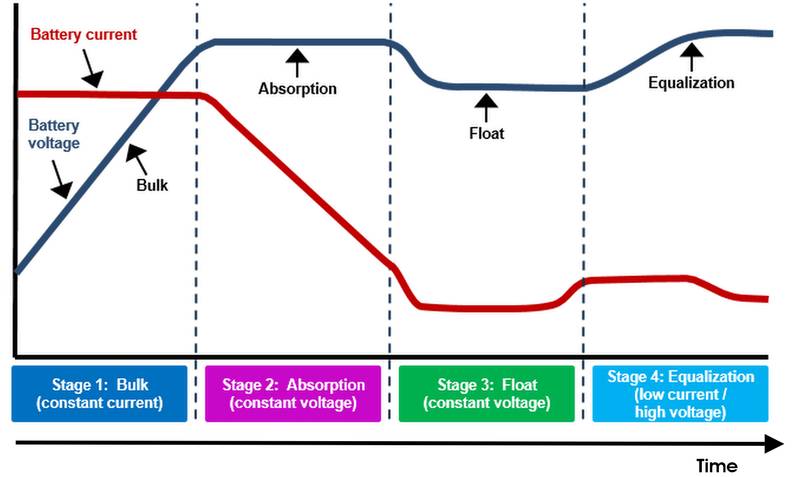
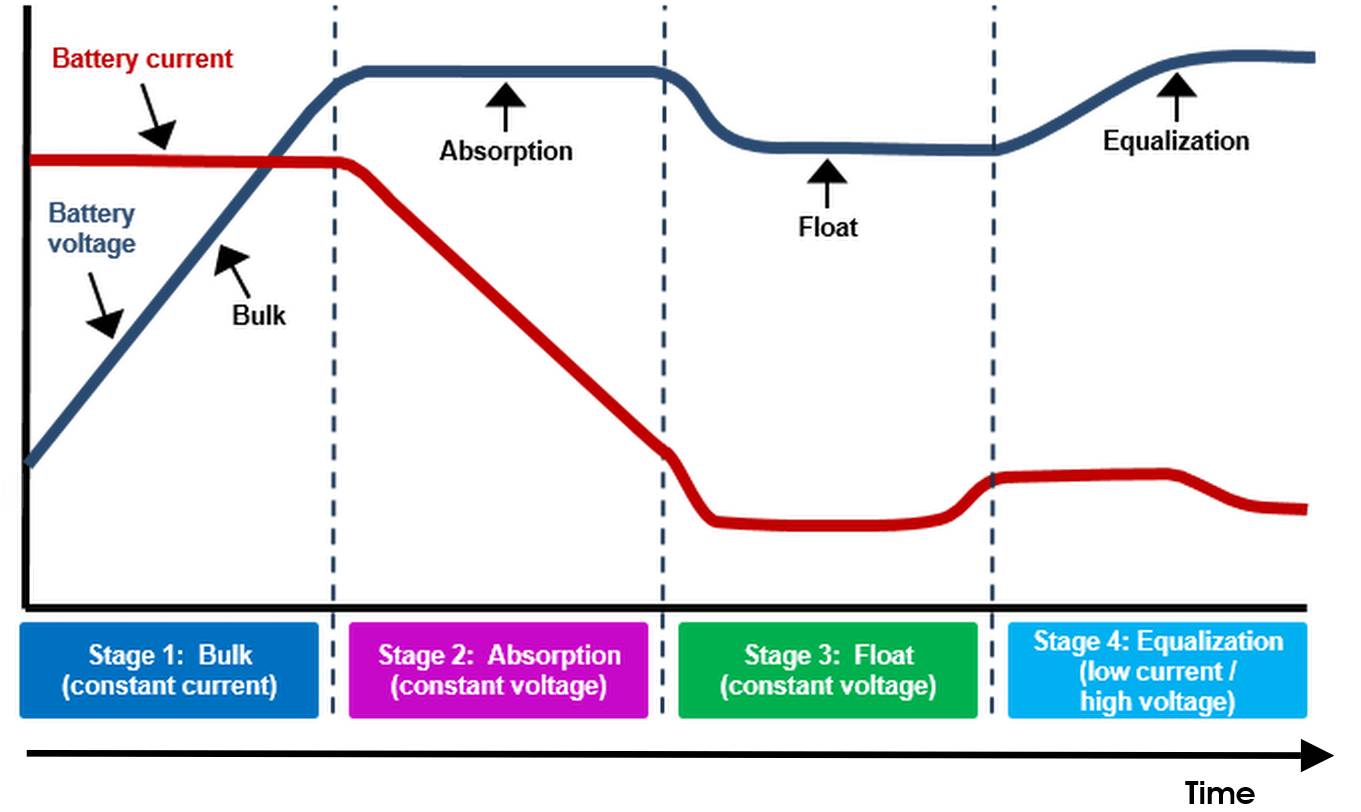
Products
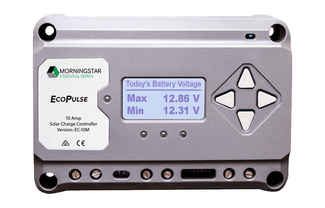
PWM Charge Controllers
These work by gradually reducing (or tapering) the flow of energy into the battery as a full charge...
View collection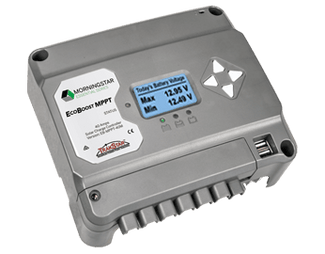
MPPT Charge Controllers
These are needed for use with larger 60 cell PV panels in order to match the PV output...
View collection